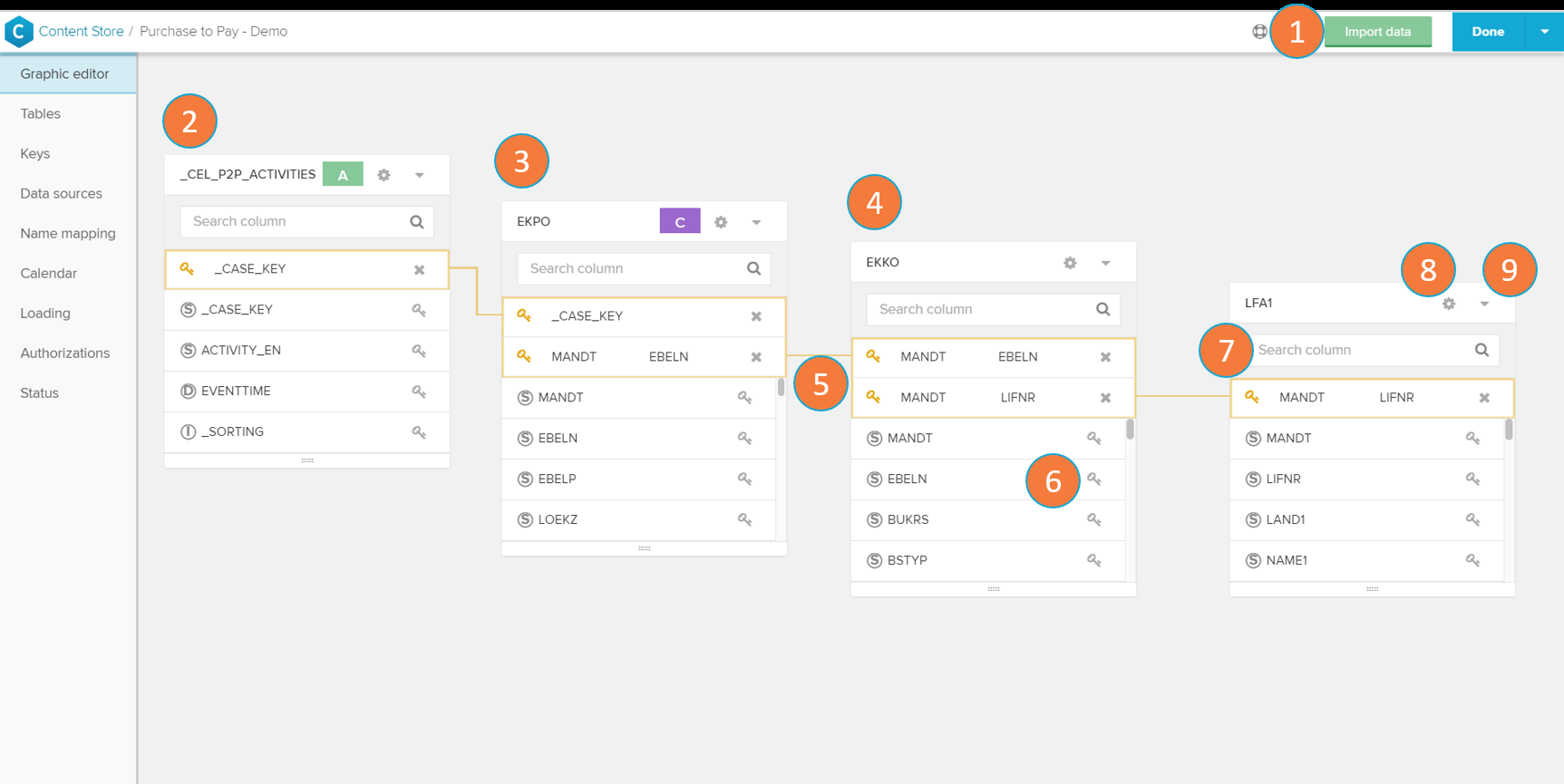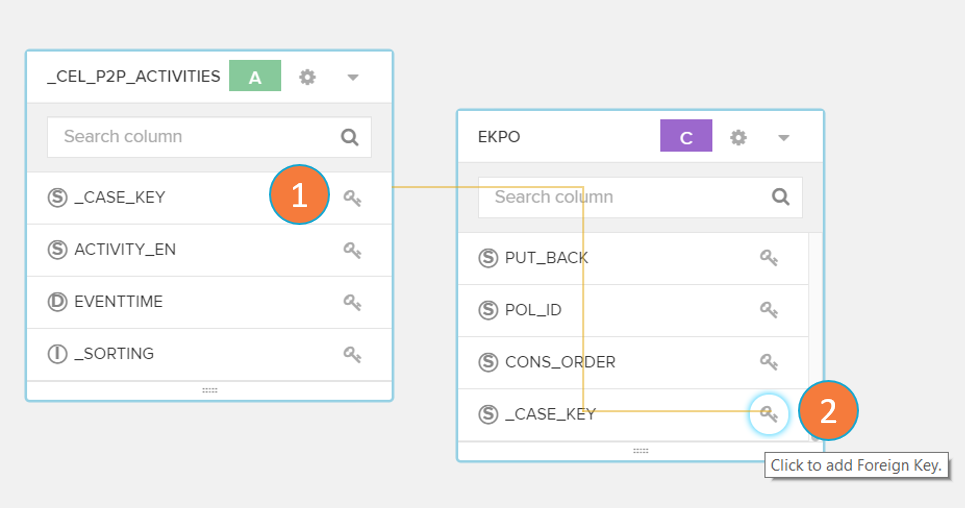The Graphic Editor is the base for any operations that are performed with the data in your data model. It gives you a graphical map of all tables with their foreign-key relations, which link the single tables of a data model together.
To use the tables for an analysis in CPM 4, you need to define relations by using primary - and foreign keys.
Graphic editor components
The Graphics Editor shows your current connected tables and allows you to assign the relations between them and which of their columns you which to display. You can also freely move the tables with Drag & Drop without affecting their relations.
- Import data: add new data tables to your analysis (see the Importing Data page).
- Activity table: activity tables are the basis for your Celonis analysis. They contain the necessary columns of 'Case key', 'Activity', and 'Event time'. Activity tables are identified by the icon.
- Case table: case tables contain all information about your cases in the event log. They are identified by the icon.
- Data table: other raw tables containing relevant information associated to your analysis. Raw data tables contain no icons.
- Foreign keys connection: the golden lines represent the foreign keys used to connect your data tables.
- Add new foreign key connection: click on the key icon to start the foreign key connection process (see the 'Define keys in graphic editor' section below).
- Search column: use the search field to look for a key column.
- Settings: click on the settings icon to open the table's properties (see Tables section)
- Expand/collapse icon: click on the icon to show (or hide) all available columns and to graphically assign foreign keys.
Define keys in graphic editor
Two tables may be linked on the graphic editor by combining their foreign keys.
Process:
Click with left mouse button on the key symbol (1) of your first table.
Move the mouse to the key symbol of the second table (2) and click to select it. The selected key should be the corresponding foreign key which allows the establishment of a connection between the two tables.
To cancel a selection before the connection was made, simply click on any blank space on the screen. After the connection was made, cancel it by clicking on the corresponding x button.
Multiple connections

